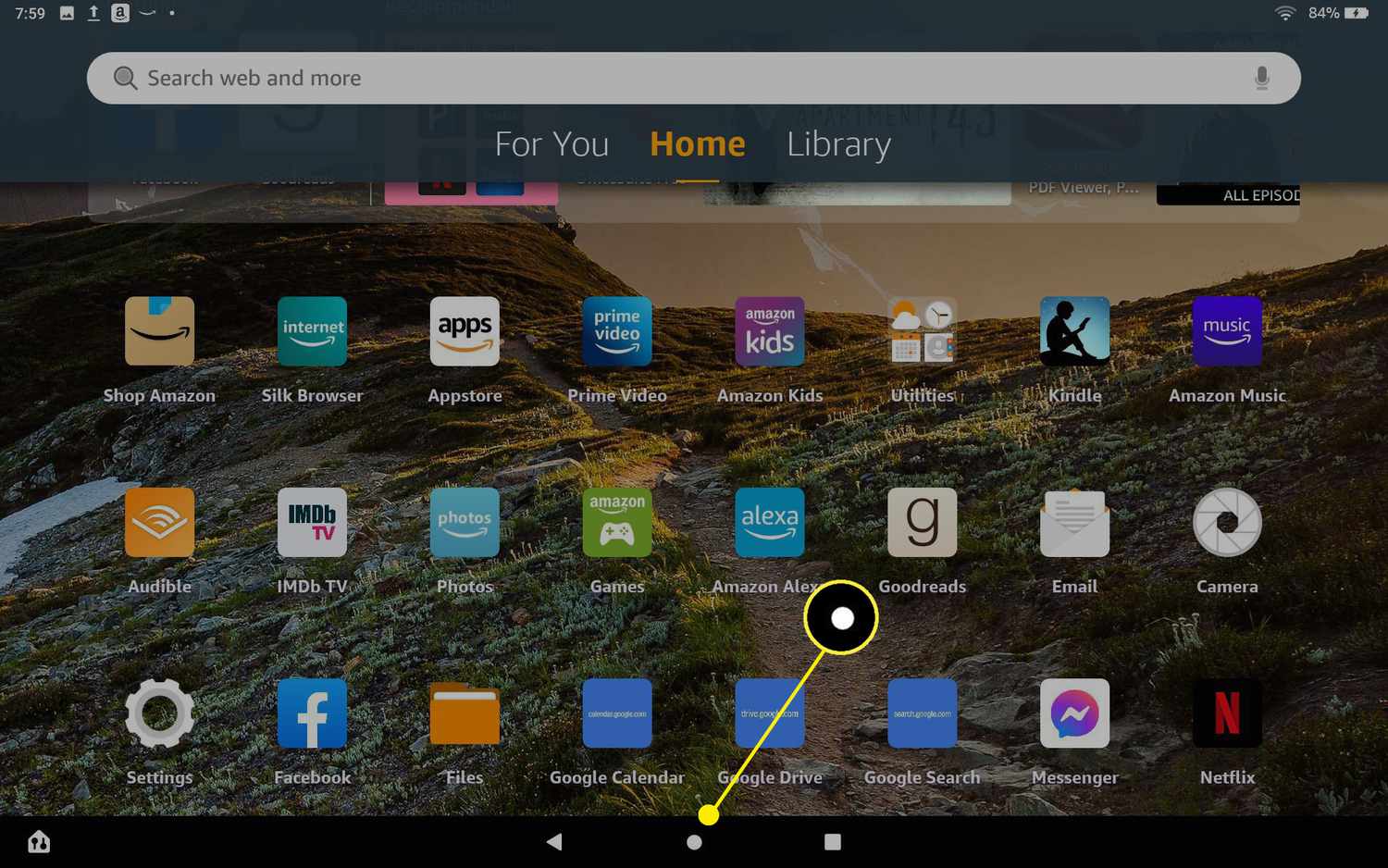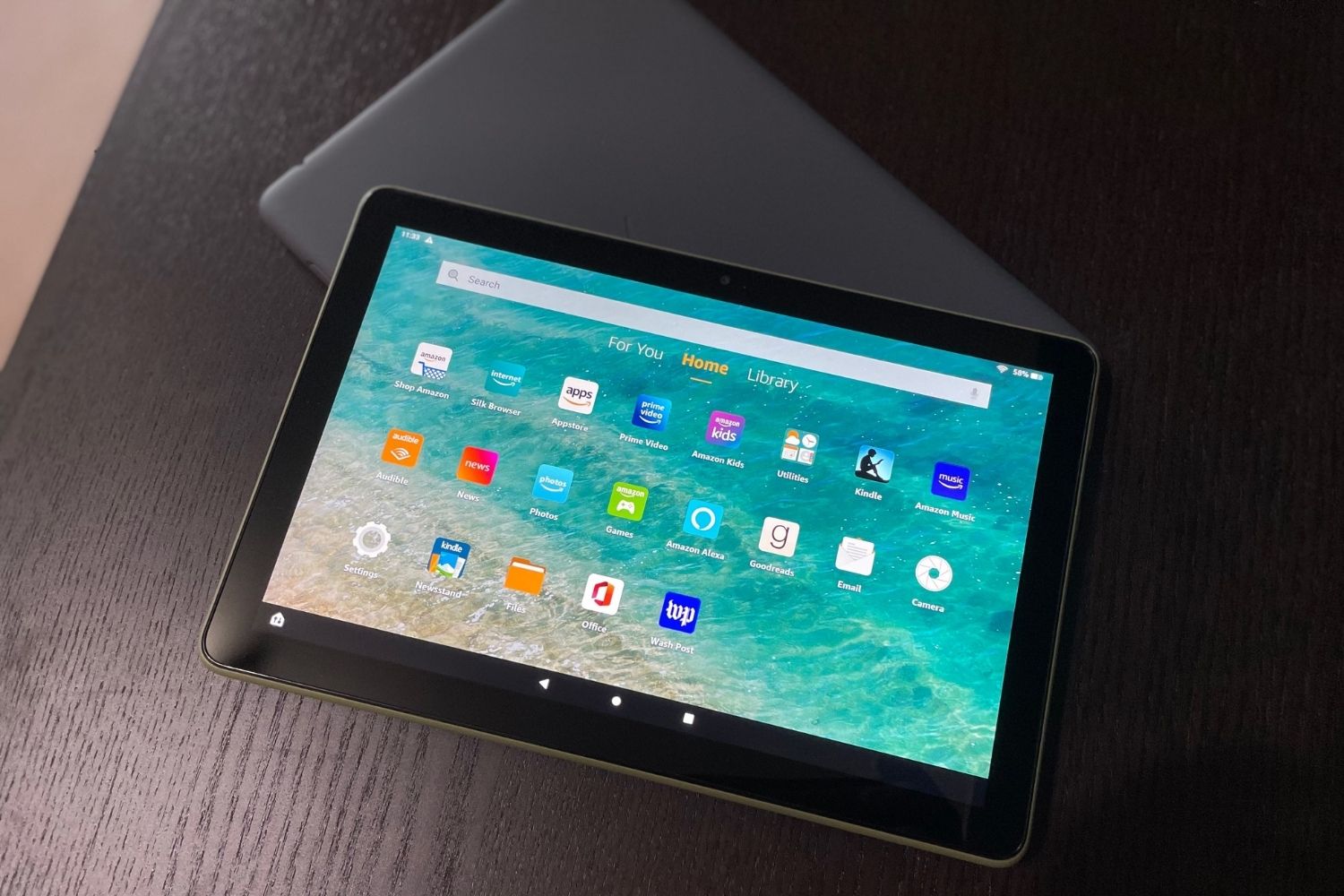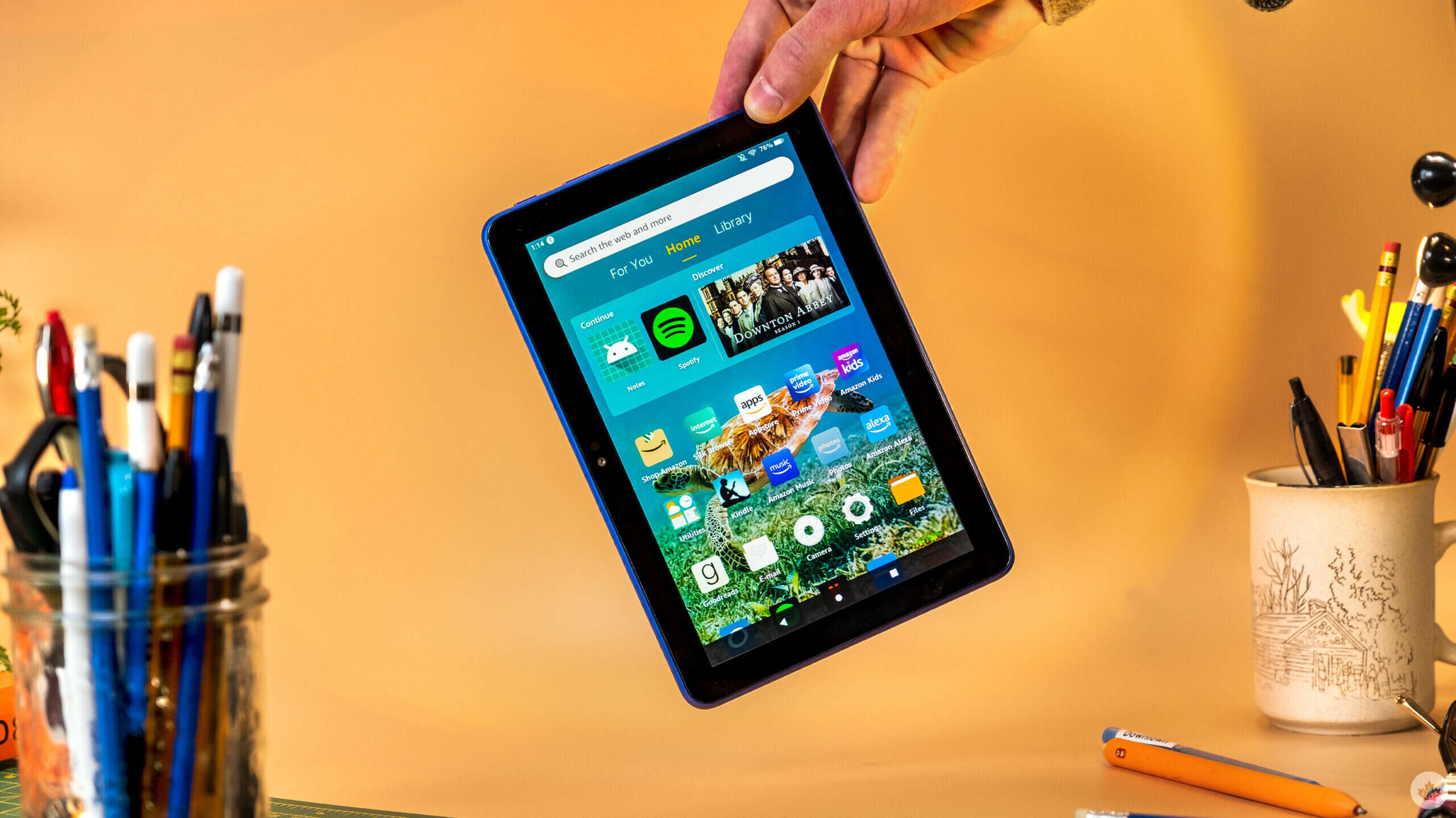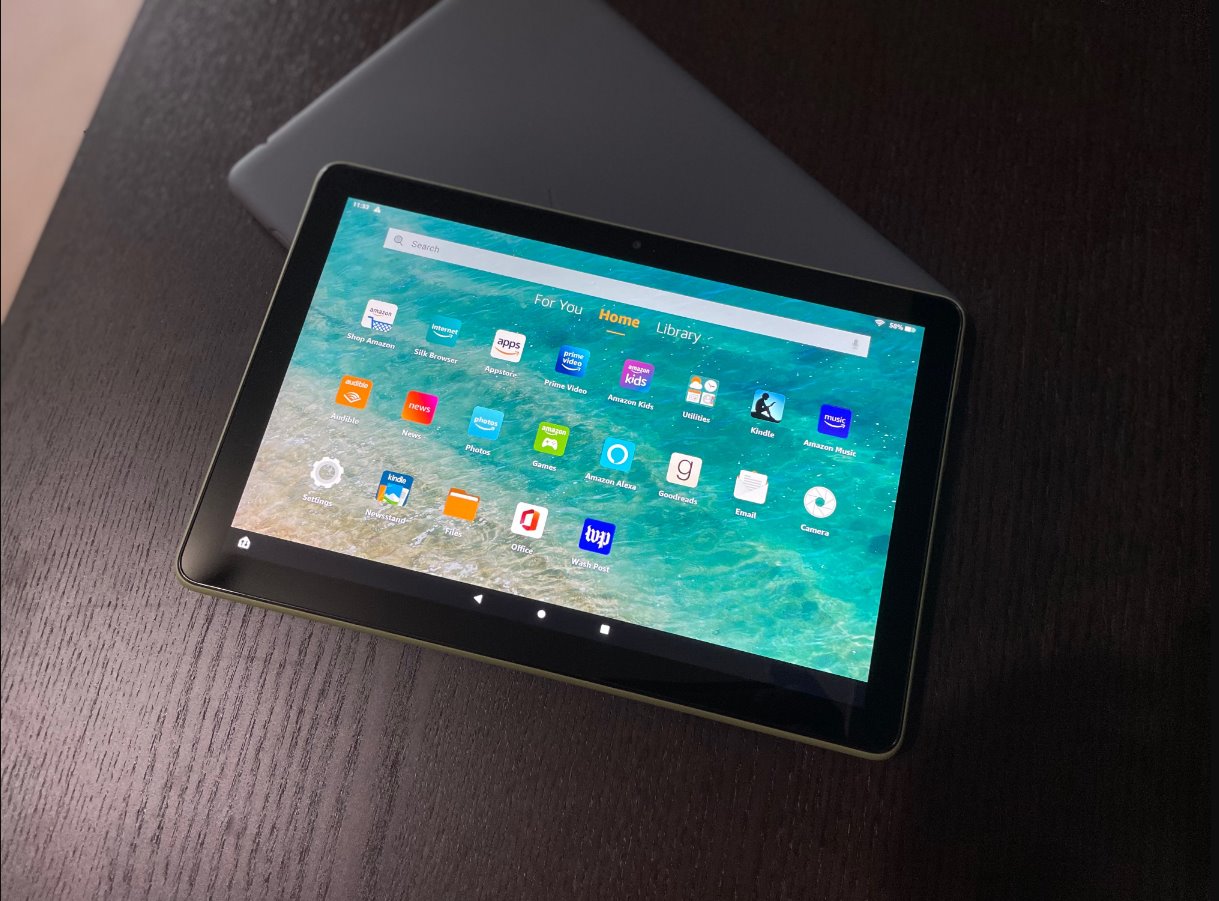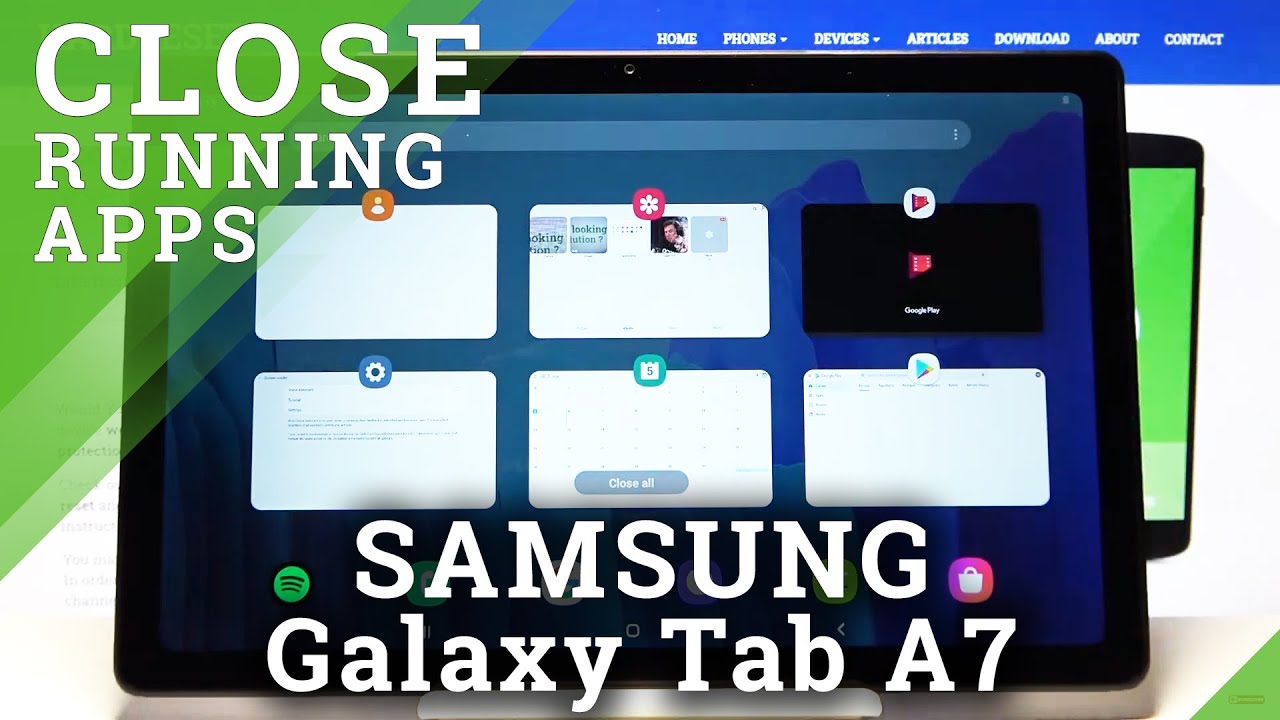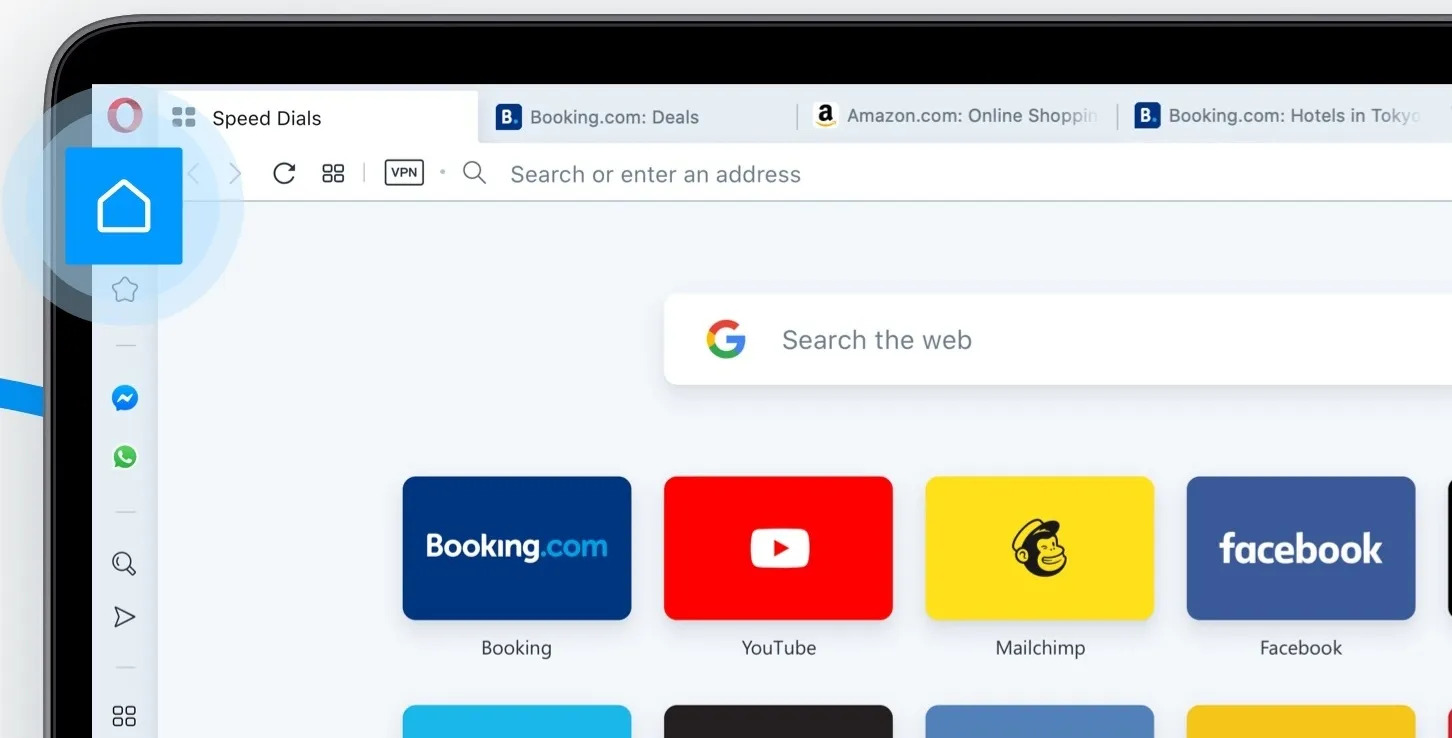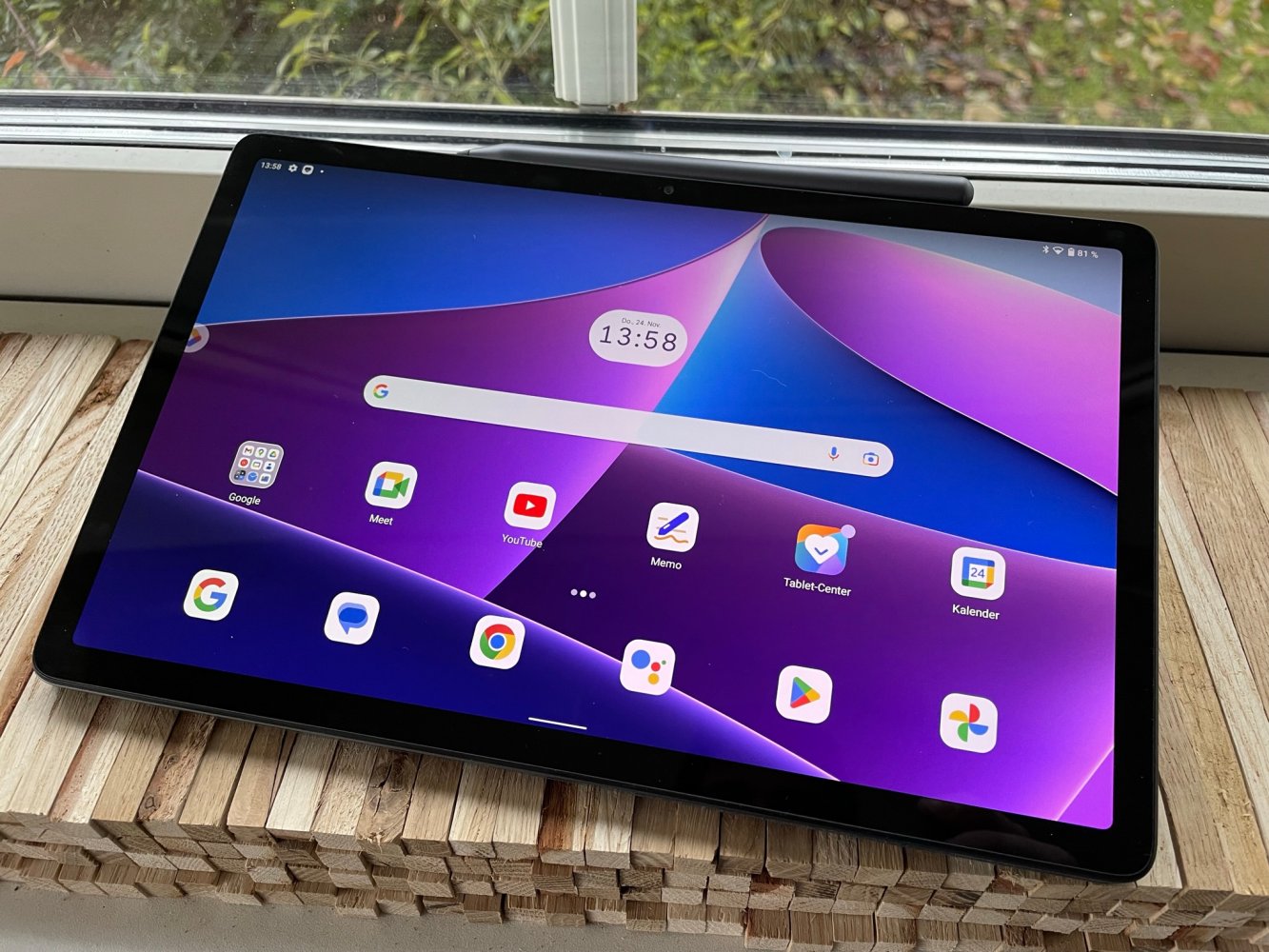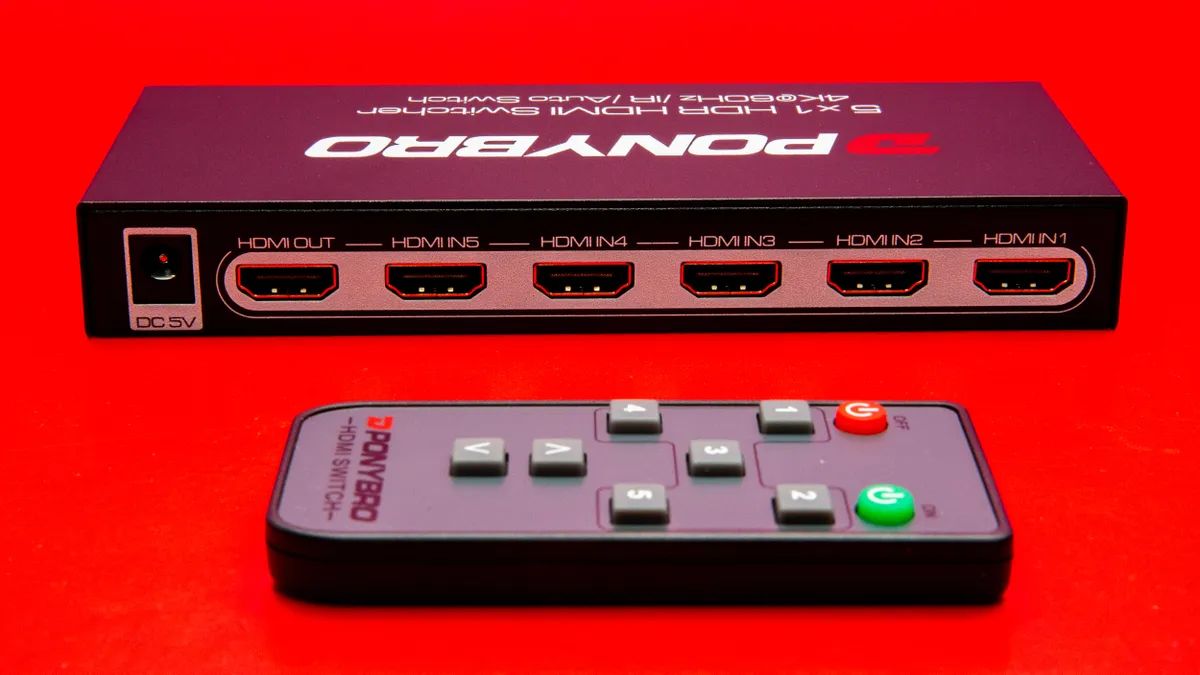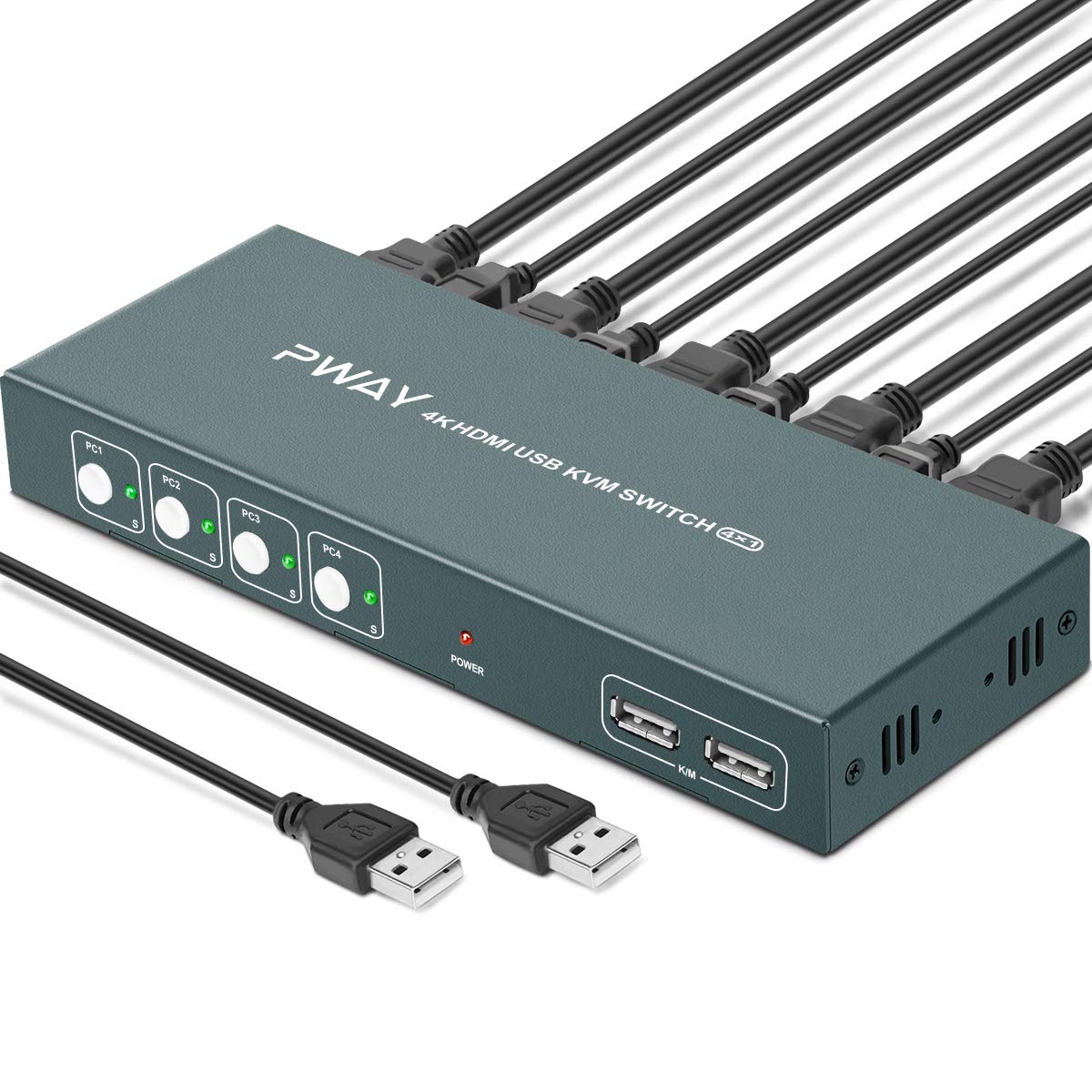Introduction
The Task Switcher on a Fire Tablet is a useful feature that allows you to seamlessly switch between different apps and perform multitasking activities. Whether you want to quickly switch between apps, view and close open apps, or use split-screen multitasking, the Task Switcher provides an intuitive interface to enhance your tablet experience.
When you have multiple apps running on your Fire Tablet, the Task Switcher comes in handy by providing a visual representation of all the apps currently open on your device. This allows you to navigate more efficiently, saving you time and effort in accessing the apps you need.
In this article, we will explore the functionality of the Task Switcher, how to access it, and how to make the most out of its features. Whether you use your Fire Tablet for work, entertainment, or both, understanding how to utilize the Task Switcher will greatly improve your productivity.
So, let’s dive in and discover the power of the Task Switcher on your Fire Tablet.
What is the Task Switcher on Fire Tablet?
The Task Switcher on a Fire Tablet is a built-in feature that allows you to easily switch between different apps without closing them. It provides a convenient way to navigate through your open apps, making it effortless to multitask and switch between tasks seamlessly.
Think of the Task Switcher as a virtual deck of cards, with each card representing an open app on your Fire Tablet. By accessing the Task Switcher, you get a visual overview of all the apps currently running on your device. This enables you to quickly locate and switch to the specific app you need.
Not only does the Task Switcher allow for rapid app switching, but it also retains the state of each app. This means that when you switch back to an app from the Task Switcher, it will open exactly where you left off, preserving your progress and data.
With the Task Switcher, you can effortlessly transition between productivity apps, entertainment apps, and any other apps you frequently use on your Fire Tablet. Whether you’re editing a document, browsing the web, or watching a video, the Task Switcher provides a seamless user experience by eliminating the need to constantly open and close apps.
Furthermore, the Task Switcher is designed to optimize performance and memory usage on your Fire Tablet. It automatically manages the app’s resources, ensuring that apps in the background don’t unnecessarily consume system resources, resulting in improved overall device performance.
Overall, the Task Switcher on a Fire Tablet is an invaluable feature that simplifies app navigation and enhances multitasking capabilities. It streamlines your workflow, allowing you to effortlessly switch between apps and efficiently manage tasks on your device.
How to Access the Task Switcher
Accessing the Task Switcher on your Fire Tablet is a simple and straightforward process. There are different methods to invoke the Task Switcher, depending on the model of your device and the version of Fire OS it’s running. Here are a few common ways to access the Task Switcher:
- Physical Button: On some Fire Tablet models, you can access the Task Switcher by long-pressing the home button. This will bring up the Task Switcher overlay, displaying a grid of open apps.
- Gesture Navigation: If your Fire Tablet supports gesture navigation, you can access the Task Switcher by swiping up from the bottom of the screen and then pausing. This will reveal the Task Switcher interface, allowing you to view and switch between open apps.
- Navigation Bar: For Fire Tablets with a navigation bar, you can access the Task Switcher by tapping the square or Recent Apps button. This will display the Task Switcher overlay, showing you all your open apps in a grid layout.
- Settings Menu: Alternatively, you can access the Task Switcher by going to the device settings. Open the Settings app, then navigate to the “Apps & Notifications” or “Applications” section, depending on your device’s Fire OS version. From there, you should find an option to view all open apps and access the Task Switcher.
Once you’ve accessed the Task Switcher, you can scroll horizontally to browse through the open apps. Each app card will display a snapshot of the app’s current state, allowing you to identify and select the desired app to switch to.
It’s important to note that the specific method for accessing the Task Switcher may vary slightly depending on your device model and operating system version. If you’re unsure how to access the Task Switcher on your specific Fire Tablet, you can refer to the user manual or the official Amazon support website for detailed instructions.
Now that you know how to access the Task Switcher, let’s explore how you can view and close apps using this powerful feature.
Viewing and Closing Apps in the Task Switcher
Once you’ve accessed the Task Switcher on your Fire Tablet, you can easily view and manage your open apps from this interface. Here’s how you can use the Task Switcher to view and close apps:
Viewing Apps: When you open the Task Switcher, you’ll see a grid of app cards representing your open apps. Each card displays a snapshot of the app’s current state, allowing you to quickly identify and locate the app you want to switch to. You can scroll horizontally through this grid to see more apps if there are more open than can fit on the screen at once.
Switching Apps: To switch to a different app, simply tap on its corresponding app card in the Task Switcher. This will instantly bring the selected app to the foreground, allowing you to continue where you left off. The Task Switcher makes it seamless to transition between apps without losing your progress or data.
Closing Apps: If you want to close an app from the Task Switcher, there are a couple of methods you can use. Firstly, you can swipe an app card upwards or sideways to dismiss it. This action will remove the app from the Task Switcher and terminate its background processes, freeing up system resources.
Alternatively, you can also close multiple apps simultaneously. To do this, tap and hold on an app card in the Task Switcher until a selection menu appears. Then, simply tap on the additional app cards you want to close. Finally, tap on the close or dismiss button that appears at the top or bottom of the screen to close the selected apps.
By efficiently closing unnecessary apps from the Task Switcher, you can optimize your Fire Tablet’s performance and memory usage. It’s important to note that not all apps can be closed from the Task Switcher, as system apps and certain background processes may be necessary for the device to function properly.
Now that you know how to view and close apps using the Task Switcher, let’s explore the split-screen multitasking capabilities that it offers.
Using Split-Screen Multitasking with the Task Switcher
The Task Switcher on your Fire Tablet not only allows you to switch between apps but also enables you to use the split-screen multitasking feature. Split-screen multitasking provides a convenient way to view and interact with two apps simultaneously, making it easier to multitask and increase productivity. Here’s how you can use split-screen multitasking with the Task Switcher:
Accessing Split-Screen Mode: To activate split-screen mode, start by opening the Task Switcher. From the Task Switcher interface, tap and hold on the app card of the first app you want to use in split-screen mode. A menu will appear, presenting you with various options. Look for the option that says “Open in Split Screen” or a similar variation. Once you’ve selected this option, the first app will resize and take up one half of the screen, while the other half will display the list of open apps in the Task Switcher.
Choosing the Second App: While in split-screen mode, you’ll notice that the Task Switcher displays a list of available apps in the side panel. Swipe horizontally to scroll through this list and locate the app you want to use alongside the first app. Once you find the app, simply tap on its app card in the Task Switcher, and it will occupy the other half of the screen. The two apps are now in split-screen mode, allowing you to work with them simultaneously.
Adjusting the Split-Screen Divider: By default, the split-screen divider is positioned in the middle of the screen, equally dividing the available space between the two apps. However, you can customize this divider to allocate more or less space to each app. To do this, simply tap and hold on the divider, then drag it towards the left or right edge of the screen to adjust the app sizes accordingly.
Interacting with Split-Screen Apps: With the two apps occupying the split screen, you can now interact with both simultaneously. For example, you can reply to an email in one app while referencing a web page in the other app. Keep in mind that not all apps are compatible with split-screen mode, and some may not function optimally when sharing the screen. However, most popular apps are designed to work well in split-screen mode, enhancing your multitasking experience.
Exiting Split-Screen Mode: When you’re finished using split-screen mode, you can exit it by dragging the split-screen divider all the way to either edge of the screen. This will collapse the split-screen view and return to the Task Switcher with the two apps still open. From there, you can switch back to full-screen mode by tapping on either app card in the Task Switcher.
By utilizing split-screen multitasking with the Task Switcher, you can easily navigate between two apps and complete tasks more efficiently. This feature is especially useful when you need to reference information from one app while working in another, ultimately streamlining your workflow.
Customizing the Task Switcher Settings
Your Fire Tablet offers some customization options for the Task Switcher, allowing you to tailor its behavior and appearance to your preferences. Let’s explore how you can customize the Task Switcher settings:
Accessing the Task Switcher Settings: To access the Task Switcher settings, go to the device settings on your Fire Tablet. Open the Settings app and look for the “Display” or “Home Screen & Display” section, depending on your device’s Fire OS version. Within this section, you should find options related to the Task Switcher. Tap on these options to customize the Task Switcher settings.
Changing Visual Appearance: One customization option is the visual appearance of the Task Switcher. You may have the choice to switch between a grid layout or a carousel layout for the app cards in the Task Switcher. The grid layout displays the app cards in a grid pattern, making it easier to see multiple apps at a glance. The carousel layout, on the other hand, displays the app cards in a horizontal carousel, allowing you to scroll through the apps more fluidly. Choose the layout that suits your preferences and enhances your user experience.
Displaying App Previews: Another customization option is whether to display app previews in the Task Switcher. App previews show a snapshot of each app’s current state, giving you a visual cue to identify and select the desired app more easily. If you prefer a cleaner and more minimalist Task Switcher interface, you may choose to disable app previews.
Clearing Task Switcher History: In some Fire Tablet models, you may have the option to clear the Task Switcher history. This allows you to remove all the recently accessed apps from the Task Switcher, providing a fresh start and decluttering the interface. It’s useful if you want to start afresh or maintain privacy by removing any traces of the apps you’ve used.
Other Task Switcher Customizations: Depending on your device and Fire OS version, there may be additional settings related to the Task Switcher. These could include options to customize animations, adjust the behavior of the Task Switcher activation method, or customize the size and position of the Task Switcher overlay. Explore these settings to personalize the Task Switcher to your liking.
By customizing the Task Switcher settings, you can optimize its functionality and appearance based on your preferences. Take some time to explore the various options and find the configuration that enhances your multitasking experience on your Fire Tablet.
Conclusion
The Task Switcher on your Fire Tablet is a powerful tool that enhances your multitasking capabilities, allowing you to seamlessly switch between apps and manage tasks more efficiently. By gaining a better understanding of how to access the Task Switcher, view and close apps, utilize split-screen multitasking, and customize its settings, you can make the most out of this feature.
With the Task Switcher, you can easily navigate through your open apps, switch back and forth between tasks, and pick up where you left off without losing your progress. This saves you time and effort, streamlining your workflow and increasing your overall productivity on your Fire Tablet.
The ability to use split-screen multitasking with the Task Switcher further improves your multitasking experience. You can interact with two apps simultaneously, making it easier to reference information, work on multiple projects, or enjoy entertainment while staying productive.
Customizing the Task Switcher settings allows you to tailor its appearance and behavior to your liking, ensuring a user experience that aligns with your preferences. Whether it’s tweaking the visual layout, enabling or disabling app previews, or clearing the Task Switcher history, you have control over how the Task Switcher operates on your Fire Tablet.
To make the most of the Task Switcher, familiarize yourself with the different methods to access it based on your device model, master the gestures or button shortcuts to switch between apps, and explore the possibilities of split-screen multitasking. Experiment with the settings to find the configuration that works best for you.
By leveraging the power of the Task Switcher on your Fire Tablet, you can boost your productivity, seamlessly manage tasks, and keep up with your busy lifestyle.







